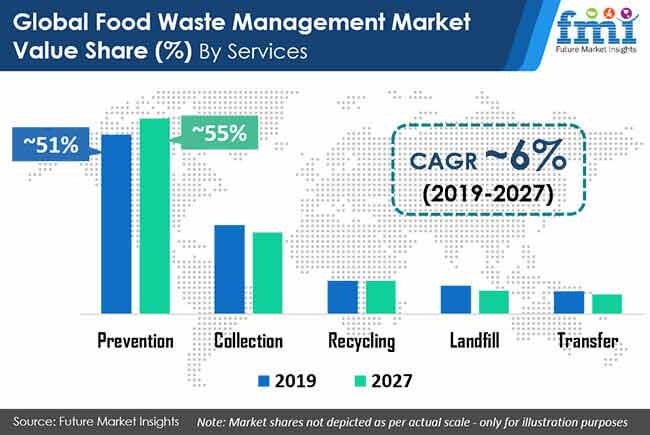In 2021, the baobab powder market is valued at US$ 6.97 Bn. The market is likely to grow at a CAGR of 6.2% CAGR through 2027, reaching US$ 10 Bn by 2027.
North America is the largest market for baobab powder in 2021 that is valued at US$ 1.81 Bn, and is likely to grow at 3.1% CAGR through 2027.
Baobab powder is popularly used in supplements, capsules, food products and considered as the latest super food.
The global market baobab powder is anticipated to witness robust growth during the assessment period. In a new report titled ‘Baobab Powder Market: Global Industry Analysis (2012 – 2016) and Opportunity Assessment (2017–2027),’ Future Market Insights studies the factors driving the popularity and adoption of baobab powder across the globe. Consumers today are becoming aware about the benefits of baobab powder, which in turn is surging the demand for baobab powder based products such as cereals and bars. Due to the fact that baobab powder has numerous skin benefits, it is used as an ingredient in various anti-ageing creams and helps protect the skin against high or low temperatures, rejuvenates the skin cells, moisturizes the skin and prevents damage from free radicals.
Request a report sample to obtain authentic analysis and comprehensive market insights at- https://www.futuremarketinsights.com/reports/sample/rep-gb-3333
Revenue from the global baobab powder market is estimated to be valued at about US$ 5,483 Mn in 2017. By 2027 end, global baobab powder market is expected to reach a value of around US$ 10,004 Mn registering a CAGR of 6.2% over the forecast period (2017–2027). In terms of volume, the global baobab powder market is estimated to be pegged at 96,444 tonnes by 2017 end, and is expected to reach 125,618 tonnes by 2027 end, exhibiting a CAGR of 2.7%.
Growing popularity of baobab supplements
With an exotic, tangy flavour described as a cross between grapefruit, pear and vanilla, the baobab fruit has been used for years in Africa. Changing consumer preferences, tastes and eating and purchasing habits, as well other factors affecting the industry including new market entrants and demographic changes may have a bearing on the global baobab powder market. Baobab powder has grown in popularity and is widely used in supplements, capsules and food products with many claiming it to be the latest super food.
Sales of baobab powder have increased over the last few years due to its positive application in supplement and food/beverages categories, which include cold cereals, and more recently, as a functional ingredient in bars. Baobab powder is rich in dietary fibre and improves the immune system.
The report profiles some of the top companies operating in the global baobab powder market including EcoProducts, Baobab Fruit Company Senegal, B’Ayoba (Pvt) Ltd, Organic Africa, Aduna Limited, Etude House, Woodland Foods, Powbab Inc, ATACORA, Halka B. Organics, Indigo Herbs LTD and Organic Burst UK Ltd. Companies are focussing on addressing customer centric product demand by expanding their product portfolio and introducing a variety of products in the global market. Suppliers are entering into long-term contracts with baobab products manufacturers to avoid increase in product prices, and baobab manufacturers are also benefitting from these long-term contracts with suppliers as it helps them sustain their operations.
Market Taxonomy
By Product Type
- Organic Baobab Powder
- Conventional Baobab Powder
By Sales Channel
- Direct Sales
- Indirect Sales
- Speciality Whole Shops
- Online Retail
By End Use
- Industrial
- Food
- Functional Food
- Dairy Products
- Bakery and Confectionery
- Others (pet food, tea, etc.)
- Beverages
- Alcoholic
- Non-Alcoholic
- Nutraceuticals
- Cosmetics
- Food
- Retail
Contact Sales for Further Assistance in Purchasing this Report- https://www.futuremarketinsights.com/checkout/3333
Table Of Content
1. Executive Summary
2. Market Introduction
2.1. Market Definition
2.2. Market Taxonomy
3. Target Market Analysis Scenario
3.1. Product Overview
3.2. Manufacturing Process Outlook
3.3. Factors Affecting Global Baobab Powder Market
3.4. PESTLE Analysis
3.5. Porter’s Analysis
3.6. Pricing Analysis
3.7. Global Baobab Powder Market Forecast, 2016-2027
3.8. Market Overview
4. Market Dynamics
4.1. Drivers
4.2. Restraints
4.3. Forecast Factors – Relevance and Impact
5. Global Baobab Powder Market Analysis and Forecast, By Product Type
6. Global Baobab Powder Market Analysis and Forecast, By End Use
7. Global Baobab Powder Market Analysis and Forecast, By Sales Channel
